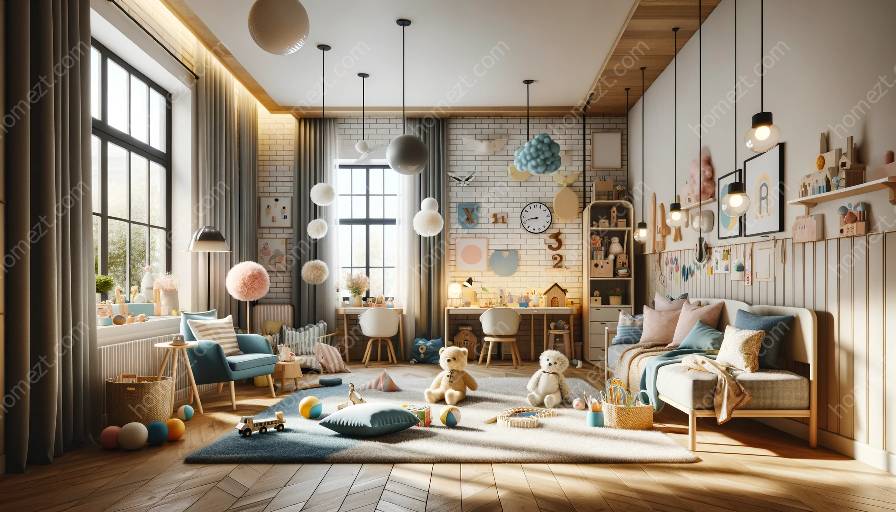Children's room design is more than just aesthetic appeal and functionality – it also plays a crucial role in the psychological and emotional well-being of children. Understanding the impact of design on children's behavior and mental health is essential for creating spaces that support their growth and development.
Importance of Children's Room Design
Children spend a significant amount of time in their rooms, making it a crucial environment that can significantly influence their emotional and psychological well-being. The design of their rooms can impact their mood, behavior, and overall mental health.
Color Psychology and Children's Room Design
Color psychology plays a vital role in children's room design. Different colors can evoke various emotions and impact children's behavior. For example, calm and soothing colors like blue and green can promote relaxation, while vibrant colors like yellow and red can energize and stimulate creativity.
Texture and Comfort
The textures and materials used in children's room design can also impact their emotional well-being. Soft and comfortable materials can create a sense of security and comfort for children, whereas harsh or uncomfortable textures may lead to irritability and discomfort.
Stimulating Creativity
Children's rooms should be designed to stimulate creativity and imagination. Creating spaces for artistic expression, such as an art corner or a reading nook, can encourage children to explore their creative abilities and develop a positive self-image.
Organization and Functionality
Well-designed and organized spaces can contribute to a child's emotional well-being by reducing stress and anxiety. Organizational systems and functional furniture can promote a sense of order and control, helping children feel more secure and at ease in their rooms.
Bringing Nature Indoors
Connecting children to nature through the design of their rooms can have a positive impact on their emotional and psychological well-being. Incorporating natural elements such as plants, natural light, and nature-inspired decor can create a calming and nurturing environment.
Intersecting with Interior Design and Styling
When considering children's room design, it's essential to integrate psychological and emotional aspects with interior design and styling principles. Balancing functionality, aesthetics, and emotional well-being is key to creating spaces that support a child's holistic development.
Collaborative Design
Collaborating with children in the design process can empower them and foster a sense of ownership and pride in their rooms. Involving them in decision-making, such as choosing colors, themes, and decor, can enhance their emotional connection to their personal space.
Mindful Design Elements
Mindful selection of design elements, such as furniture, lighting, and decorative pieces, can contribute to a harmonious and emotionally supportive environment for children. Thoughtfully curated design elements can promote a sense of happiness, security, and well-being.
Flexibility and Adaptability
Children's preferences and needs evolve as they grow, making flexibility and adaptability essential in room design. Designing spaces that can be easily adjusted and personalized as children mature can support their emotional development and autonomy.
Conclusion
Children's room design encompasses psychological and emotional aspects that significantly impact their well-being. Integrating color psychology, texture, creativity, organization, nature, and collaborative design with interior design and styling principles creates spaces that promote emotional and psychological well-being. By understanding the importance of these aspects, designers and parents can create environments that support children's holistic development and contribute to their overall happiness and mental health.


























